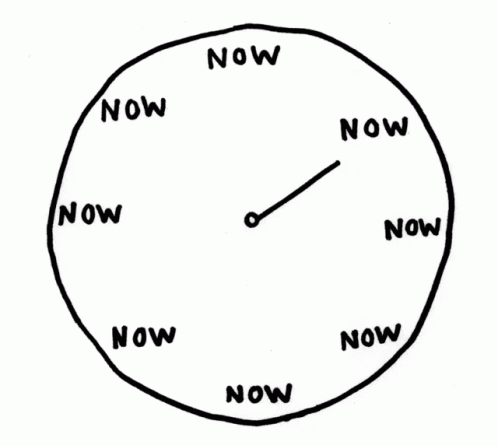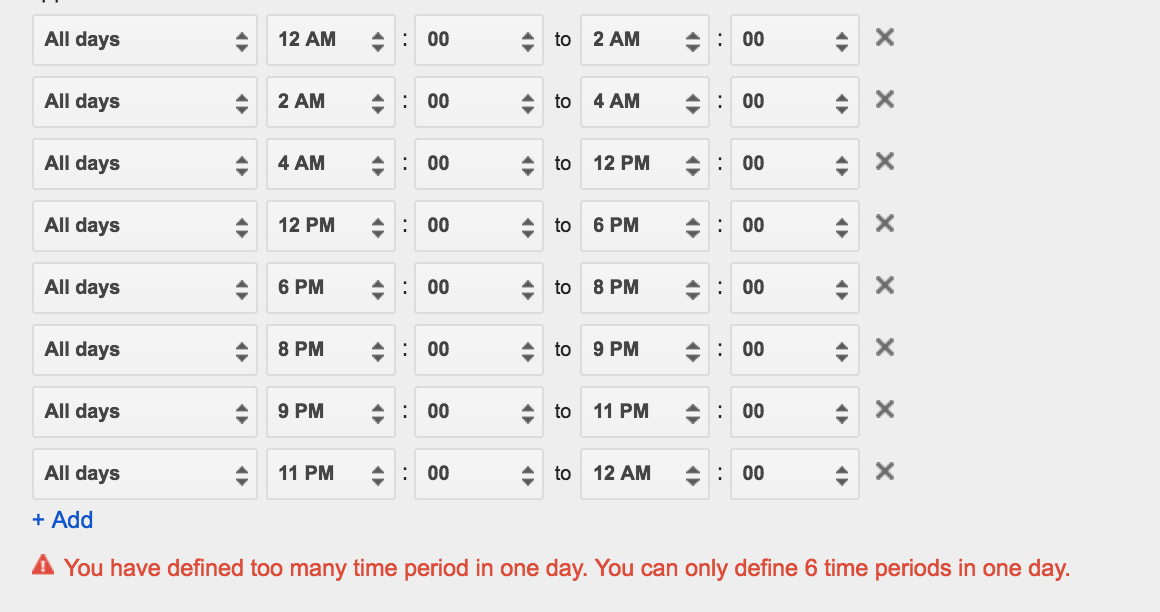The Top Ten Tips For Effective Dayparting

Over the past year, I’ve started to truly embrace a new life motto: if it takes less than ten minutes to do, do it now.
When it comes to optimizing a PPC account, ten minutes is a drop in the bucket. As digital marketers, we are left forever seeking those 0.01% incremental gains in hopes that soon enough they will amount to radical improvements. With that said, determining your need for hour of day modifiers can provide extremely competitive returns based on time invested in implementing.
[bctt tweet=”Hour of day modifiers provide extremely competitive returns based on time invested in implementing. ” username=”Will_Larcom”]
While admittedly ten minutes is an optimistic estimate, there are few optimizations for a PPC account that can offer a greater return than properly adjusting your ad schedule. When campaigns run on a simple 24/7 schedule, there is plenty of opportunity left on the table. Today’s increasingly complex conversion path dictates a needs to reach the right audience at the exact right time. In order to capitalize on this opportunity, the time is now to make sure you’ve incorporated these top ten tips into your ad scheduling strategy.

Tip #1: Segment By Campaign Or Product Category
Conversion cycles vary greatly by audience, and audience varies greatly by the product or service offered. Couple this with differing targeting tactics between campaigns or product categories, and it becomes imperative that time of day data is viewed through a specific lens.
In order to achieve this goal, make sure to group campaigns that boast a common goal and cohesive targeting tactics. Beyond product offerings, time of day analysis should be done based on campaign groups with similar time zones targeted. Lumping together national campaigns with international targeting will muddy up data and likely lead to less than effective optimizations. To the same extent, you’ll want to group together content that retains a fairly similar audience base. For example, a product that targets a student based demographic is likely to see unique metrics compared to an audience driven largely by adults with careers.
Tip #2: Know Your Goal
While dayparting is an extremely useful tool for boosting performance, it’s critical that you employ your ad scheduling strategy in a consistent manner with your campaign goals. If you’re constrained by budget, identify your inefficiencies and leverage negative modifiers to lower your cost during these time periods. On the flip side, if increasing volume is your goal than focus on bidding when conversion rates rise throughout the day to maximize click share when your audience is ready to convert.
Furthermore, it is important to understand your intended conversion action. While it may seem obvious, if you’re end goal is a phone call make sure you’ve limited your campaigns to the operational hours of your client’s call center.
Tip #3: Optimize Around Blocks Of Time, Not Individual Hours
One of the most advantageous aspects of PPC is the absurd availability of real-time, actionable data. When it comes to dayparting, however, it is important to understand your sample size while creating a highly modified schedule. For most accounts, adjusting for each individual hour is unnecessary. Often times optimizing based on general periods of the day will provide more bang for your buck. The main justification for this tip is the AdWords restriction that limits dayparting to six time periods. Most advertisers will find this threshold to provide ample flexibility when creating a highly specific schedule.

Tip #4: Understand Your Settings
The delivery method you select will significantly impact your time of day performance. As shown in the data below from a recent article by fellow PPC Hero blogger Rachael Law, your account’s potential may be hampered by accelerated delivery. When budget is limited, it can lead to an oversupply of impressions in the early hours while leaving little remaining budget for traffic later in the day.

Keep in mind that standard delivery is a best practice when budget is limited, but accelerated delivery can help drive additional traffic in campaigns that are not consistently hitting their spend limits.
Tip #5: Don’t Ignore Your Extensions
Creating an ad schedule for extensions is a largely overlooked feature within AdWords. While the prevailing strategy in the PPC community is to utilize any and all ad extensions to maximize ad real estate, there should be a degree of intentionality associated with the schedule of specific ad extensions. Chances are your structured snippets and callouts can run without exclusion, but limit your call extension to when incoming calls can best be addressed. Additionally, sitelinks should be properly scheduled to avoid sending customers to a page encouraging a phone call or chat engagement during inactive hours.
[bctt tweet=”There should be a degree of intentionality associated with the schedule of specific ad extensions.” username=”Will_Larcom”]
Tip #6: Revisit Regularly
Throughout the year, plenty of competitors will enter and exit the marketplace while simultaneously adjusting bids in response to their own time of day performance. Because of this, time of day performance will fluctuate throughout the course of a year even if all audience based variables remain constant. With this in mind, make an effort to continually reassess ad scheduling strategies and performing follow-up analysis on recently implemented modifiers to measure their impact.
Tip #7: Factor In The Conversion Path
So let’s say you’ve identified a large volume of non-converting traffic that spikes around breakfast and lunch time. Like the savvy PPC Hero you are, an aggressive negative modifier is implemented to open up additional spend for later in the day. Unfortunately, the decreased morning spend does not translate into improved conversion volume in the afternoon and evening.
Chances are you’ve cut yourself out of the beginning of the conversion funnel. Many products have critical moments where your audience is performing the research that will lead to the final conversion. A real world example of this can be found in the purchase patterns associated with that of luxury products.
Tip #8: Don’t Be Overly Reliant On Your Intuition
There is no denying the value that common sense can play in the creation of a successful ad schedule. With that said, let the data tell the story. If it contradicts with your expectation of audience behavior, don’t fight the numbers. As digital marketers, we must resist the urge to always provide a backstory to the seemingly random and chaotic nature of the internet. Certainly, there is value in providing logical justification to our data, but it shouldn’t interfere with strategy when the hard facts dictate a contradicting narrative.
Tip #9: Use A Formula-Based Approach
There are hundred of unique ways to calculate your hour of day modifier, but likely the most common is simply to calculate the difference between the campaign average of your main KPI and the hour of the day performance. A formula-based approach provides a concrete and defensible method to setting modifiers in lieu of arbitrary incremental shifts.

Pay attention to situations in which this could produce an overly aggressive alteration to your original bid. Creating both an upper and lower limit will help avoid bidding yourself out of the auction or increasing bids so drastically that your past efficiency is evaporated.
Tip #10: Use A Script
A large percentage of accounts will be able to develop a successful ad schedule utilizing the features inherent within the AdWords or Bing interface. On the other hand, high volume ecommerce clients are likely to accrue large enough data samples to justify adjusted bid scheduling for each hour of the day. If this is the case, consider using a 24-hour bidding script to maximize performance on an hourly basis.
Concluding Thoughts
Dayparting represents an integral part of every PPC account’s foundation. There is potential for large scale performance improvements with fairly simple analysis. By segmenting data based on product categories, factoring in the conversion path, and understanding the end goal, advertiser’s are more likely to reach the right audience at the right time.
Photo courtesy of Alex the Shutter on Flickr.



